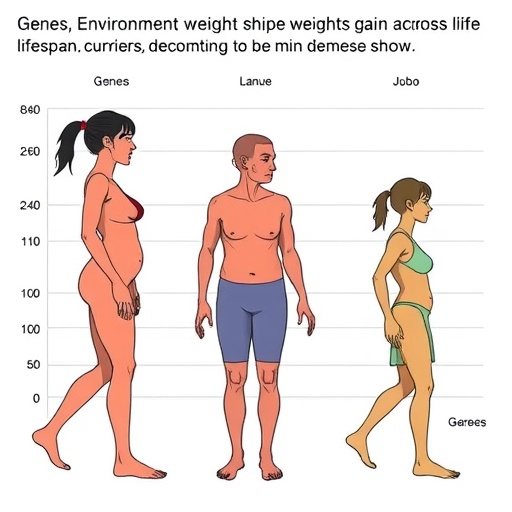A recent preliminary study led by researchers at Osaka Metropolitan University, Japan, offers new insights into the complex pathophysiology of Alzheimer’s disease (AD) and the limitations of current amyloid-targeting therapies. Despite the promising role of lecanemab, a newly approved drug designed to clear amyloid-β (Aβ) plaques, findings reveal that such treatment does not significantly restore the brain’s glymphatic clearance function within a short timeframe following administration. This discovery underscores the multifaceted nature of AD and hints at the intricate neurodegenerative cascades that remain unmitigated by amyloid reduction alone.
Alzheimer’s disease pathogenesis is intimately connected to the accumulation of Aβ plaques in cerebral tissues, which contribute to neuronal dysfunction and cognitive decline. The glymphatic system, a recently characterized waste clearance pathway, facilitates the movement of cerebrospinal fluid (CSF) along perivascular spaces into the brain interstitium, promoting metabolic waste removal including Aβ peptides. This system relies heavily on the health of periarterial spaces and astrocytic glial cells to maintain fluid dynamics critical for neural homeostasis.
In AD patients, amyloid aggregation results in vascular stiffness and impaired cerebral artery compliance. This vascular compromise diminishes CSF influx and interstitial fluid efflux, ultimately disrupting glymphatic function. The resultant reduction in waste clearance exacerbates Aβ accumulation, propelling a vicious cycle of neurodegeneration. It is against this backdrop that lecanemab’s efficacy in ameliorating AD symptoms and pathological hallmarks has generated significant clinical interest.
The investigative team employed the diffusion tensor imaging along the perivascular space (DTI-ALPS) index, a non-invasive MRI biomarker reflecting glymphatic flow efficiency, to examine changes pre- and post-lecanemab therapy in AD patients. Contrary to expectations, evaluation three months after initiating treatment revealed no statistically significant improvement in this index, suggesting systemic glymphatic impairment persists despite amyloid plaque reduction.
This lack of short-term glymphatic restoration highlights the probable irreversible neuronal and vascular damage established early in the disease course. The findings suggest that the pathological cascade leading to glymphatic dysfunction may progress beyond a point at which amyloid removal can effectively restore clearance capacity. This revelation challenges current amyloid-centric therapeutic strategies and compels the scientific community to consider adjunct or alternative interventions targeting additional pathological pathways.
The researchers emphasize that the persistence of glymphatic impairment could account for residual cognitive decline observed in patients treated with amyloid-lowering agents like lecanemab. The disconnection between plaque burden reduction and functional recovery cautions against relying solely on anti-amyloid therapies to reverse or halt Alzheimer’s progression. Instead, a more holistic approach addressing vascular integrity, neuroinflammation, and white matter lesions may be required for meaningful clinical outcomes.
Lead graduate student Tatsushi Oura pointed out the need for further longitudinal studies exploring age-related factors, disease staging, and varying degrees of white matter pathology in shaping the glymphatic response to treatment. The objective is to delineate patient subgroups who might derive the greatest benefit from lecanemab and to optimize therapeutic timing and combination strategies accordingly.
Technically, this study leverages advanced MRI imaging and diffusion tensor analysis to quantify changes in water molecule movement patterns reflecting perivascular clearance. By mapping the diffusion anisotropy in periarterial spaces, the DTI-ALPS index serves as a valuable surrogate for glymphatic system functionality. The absence of measurable improvement despite amyloid plaque removal suggests a decoupling of two interconnected yet distinct pathological processes within AD.
The clinical implications of these results are profound. While lecanemab represents a breakthrough in amyloid-targeting disease-modifying therapies, it is increasingly apparent that multi-targeted approaches may be essential to counterbalance the diverse mechanisms driving AD progression. Early intervention before overt symptom manifestation and combined therapies addressing vascular and neuroimmune components could form the cornerstone of future treatment protocols.
This investigation also accentuates the importance of non-invasive imaging biomarkers in monitoring treatment response beyond conventional cognitive assessments. Such tools are vital for understanding the biological underpinnings of therapeutic outcomes and tailoring individualized interventions. Their integration into clinical trials may accelerate the design of more effective multi-modal therapeutic regimens.
Published in the Journal of Magnetic Resonance Imaging in September 2025, the study is a testament to the evolving landscape of Alzheimer’s research that continuously reshapes our understanding of neurodegenerative diseases. It calls attention to the need for patience and persistence in developing treatments that confront the full complexity of AD pathology rather than singular causative agents.
While amyloid-β remains a critical target in Alzheimer’s research, the glymphatic clearance system’s integral role invites a paradigm shift toward therapies that restore brain waste removal capacity and vascular health. The ongoing work by Osaka Metropolitan University’s team offers a strategic blueprint for this expanded scientific focus—one that holds promise for more effective management of Alzheimer’s disease in the future.
Subject of Research: People
Article Title: Unchanged Early Diffusion Tensor Imaging Along Perivascular Space Index After Amyloid-Targeting Disease-Modifying Therapy in Alzheimer’s Disease: A Preliminary Study
News Publication Date: September 8, 2025
Web References: http://dx.doi.org/10.1002/jmri.70118
Image Credits: Osaka Metropolitan University
Keywords: Alzheimer’s disease, lecanemab, amyloid-beta, glymphatic system, diffusion tensor imaging, DTI-ALPS index, neurodegeneration, cerebrospinal fluid clearance, amyloid plaques, vascular stiffness, disease-modifying therapy
Tags: Alzheimer’s disease researchamyloid-β plaque clearanceanti-amyloid therapy effectivenessastrocytic function in neurodegenerationcerebrospinal fluid dynamicscognitive decline in Alzheimer’sglymphatic system functionimplications of amyloid reduction in ADlecanemab treatment outcomesneurodegenerative disease mechanismsvascular health in Alzheimer’swaste clearance pathways in brain





